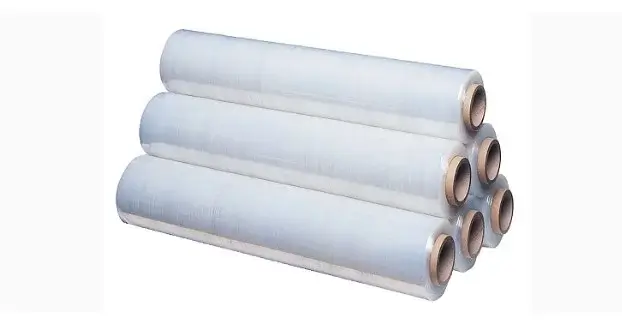Stretch film belongs to the category of the most versatile, sought-after packaging materials. Depending on the thickness, raw materials and other characteristics, it can be used for packaging food products, building materials, other containers, cardboard boxes, plastic containers for protection against external influences, atmospheric and mechanical, as well as to preserve the consumer, operational properties of the cargo.
Benefits
Benefits stretch films are:
- elasticity, compatibility with products regardless of size and configuration;
- extensibility, the coefficient is from 2 to 5 times, in comparison with the original indicator, without breaking;
- strength, ability to withstand even intentional mechanical stress, punctures, cuts;
- lack of adhesion to the packaged product, which simplifies removal;
- minimum weight, which is important for further transportation of packaged goods;
- high degree of protection. The film softens shock loads, excludes contact of the contents with moisture, dust, pollutants, prevents the formation of an environment favorable for the formation and spread of the fungus;
- low cost;
- transparency, allowing to evaluate the content, its condition and state of conservation. However, there are also mass-dyed films that are opaque, provide privacy and protect against ultraviolet radiation.
Initial raw materials
The following is used in the manufacture of the material:
- Polyethylene. The safest film suitable for food, cosmetics, pharmaceuticals.
- PVC. Tight, strong packaging suitable for bulky, heavy goods such as luggage bags at airports.
- Polystyrene with chemical modifying additives. The most durable material, focused on working with large loads, for example, boxes stacked on pallets.
Production technology allows the use of both primary (https://tranzittara.ru/catalog/strejch-plenka-pervichnaya/) , and secondary (https://tranzittara.ru/catalog/strejch-plenka-vtorichnaya/) raw materials that reduce the cost, but negatively affect elasticity, eliminating the possibility of contact with food, pharmaceuticals and other similar products.
Thickness
A significant classification factor is thickness. For food products, a film no thicker than 11 microns is used, which provides gas permeability, which is necessary to preserve the freshness of the contents. Thick films, from 13 to 30 microns, are better suited for transporting non-food products.




